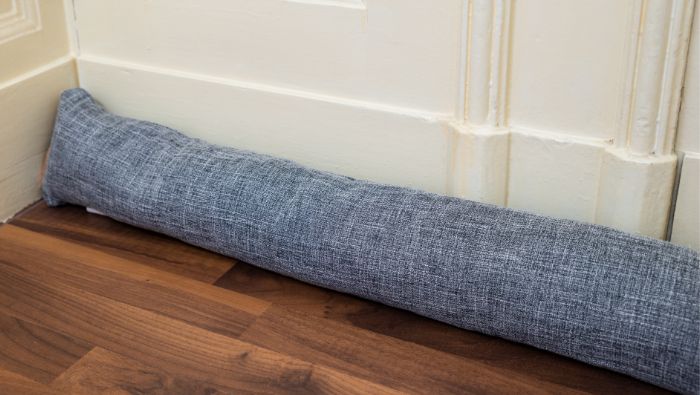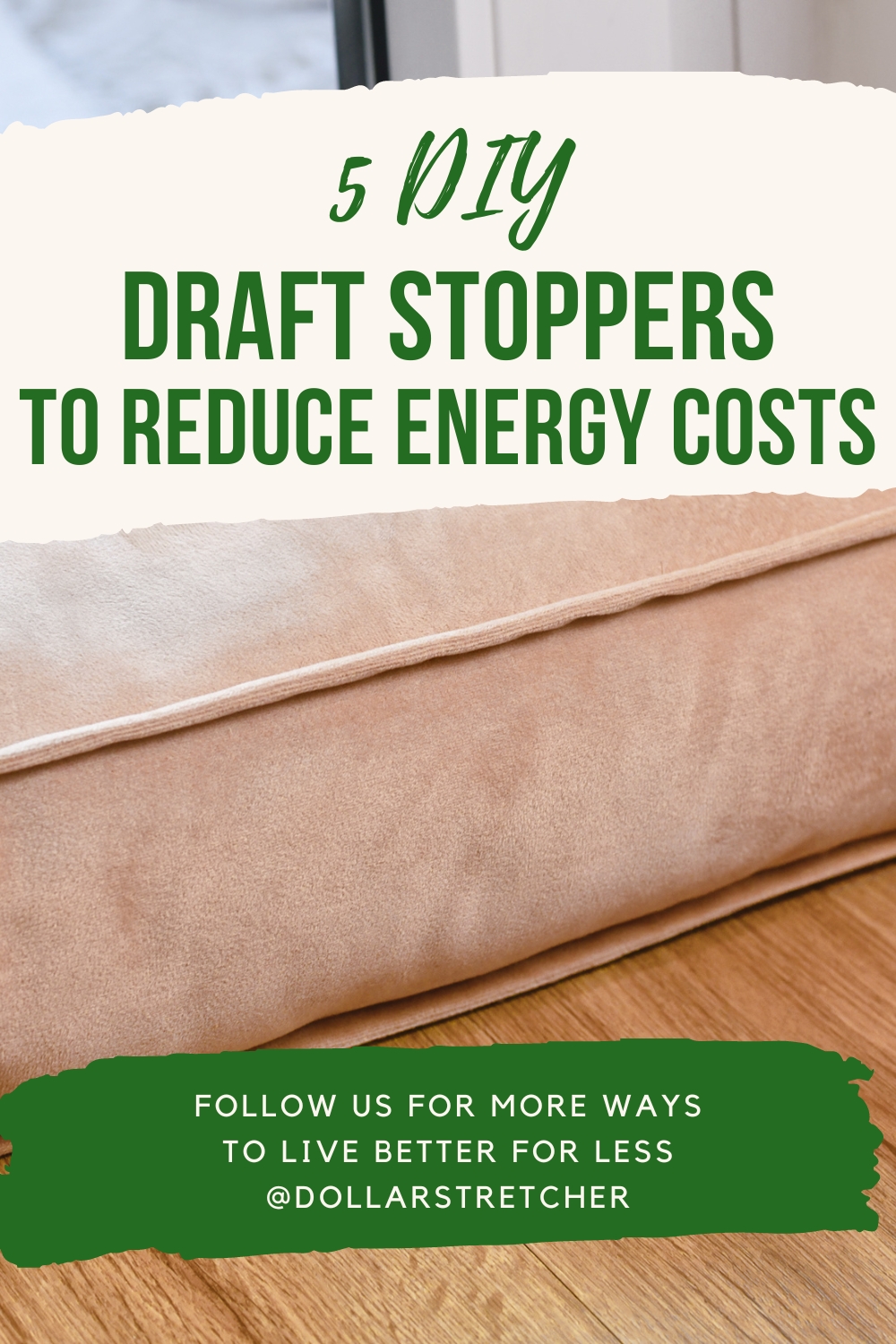5 DIY Draft Dodgers for Reducing Energy Costs
by Andrea Norris-McKnight

Are drafty doors costing you dollars? These inexpensive ideas for DIY draft dodgers can help you keep both your home and budget comfortable.
Drafts are the largest source of heating and cooling loss in the home. This includes drafts through windows, doors, dryer vents, attic fans and other “holes” in our homes. According to Energy.gov, “The potential energy savings from reducing drafts in a home may range from 10% to 20% per year, and the home is generally much more comfortable afterward.”
One source of drafts you can easily plug is the space beneath your exterior doors. A Money.com article states that a 1/8-inch gap under a 36-inch-wide door “will let in as much cold air as a 2.4-inch-diameter hole punched in the wall.”
A frugal solution to stopping those under-door drafts? Make or buy draft dodgers for your doors.
What Are Draft Dodgers?
A draft dodger, also called a draft blocker or draft stopper, is simply a device that fills that space under your door to keep the cold air out and the warm air in the winter. They can also be used in the summer to keep the cool air in and hot air out. Draft dodgers can also be placed on window sills to block drafts.
You can buy door drafts for less than $20. We recommend a few cheap options below. But you can often make them for less.
Sign Up for Savings
Subscribe to get money-saving content by email that can help you stretch your dollars further.
Twice each week, you'll receive articles and tips that can help you free up and keep more of your hard-earned money, even on the tightest of budgets.
We respect your privacy. Unsubscribe at any time.
5 Ideas for DIY Draft Dodgers
Here are five simple DIY draft dodger ideas from our frugal readers that can help you keep energy costs in check. You may already have the materials at home to make a few of these.
A Long Squeegee Makes a Good Draft Dodger
Go to a wholesale house that sells cleaning supplies and buy a 36″ rubber squeegee (most doors are 36″). Then screw it to the door so it just touches the floor. No more drafts and it is always in place!
Erich
Repurpose Those Old Jeans
To stop cold drafts from unused rooms, I used to put rolled-up towels in front of the doors. I was constantly tripping over them or ensuring they were back in place. I came up with the idea to make a permanent one.
I took a piece of denim from an old pant leg the width of the door, doubled it, sewed the ends together, and put enough sand in it to hold it to the floor. Then I fastened it to the door with a strip of wood so it would just touch the floor.
No more drafts and it is always in place.
Mike
Turn Foam Pipe Insulators Into Draft Dodgers
In my old farmhouse, I found that the best way to stop drafts under doors is by using two foam pipe insulators. I made a fabric sleeve that was big enough to hold two pipe insulators plus the depth of the door. It is as long as the door is wide. I just tucked the end closed so that I could remove the pipe insulators and wash the fabric as needed. Installation was as easy as sliding it under the door with one foam insulator on each side of the door.
I no longer have to worry about the kids remembering to put the draft stopper back because it stays on the bottom of the door.
Jennifer
No-Sew Fabric DIY Draft Dodgers From Old Pillowcases
There are those of us that cannot sew. I created simple draft dodgers for the bottom of doors using old pillowcases that matched the rooms I wanted them in. I put clothes slated for Goodwill into the pillowcases and used raffia (you could use yarn or string) to tie them every six inches. They work great! When dirty, I simply toss them into the washer and dryer. Recycle, reuse, and redirect the drafts!
Jacque
Bob Vila’s Ideas for Draft Dodgers
I came across an article on Bob Vila’s website for DIY draft dodgers and used a few of the ideas to make dodgers for our doors. Mine don’t look as “crafty” as some of their ideas, but they work just the same!
A
Inexpensive Store-Bought Options
These may cost more than the previous DIY options, but still an investment that can save you money:
Reviewed January 2024
About the Author
Andrea Norris-McKnight took over as the editor of The Dollar Stretcher and After 50 Finances after working under the site founder and previous editor for almost 15 years. She has also written for Money.com, GOBankingRates.com, HavenLife.com and The Sacramento Bee.
Popular Articles
- 7 Habits of Highly Frugal People
- 5 Simple Budget Cuts That Can Save $200 a Month
- How to Track Down Unclaimed Funds Owed You
- 32 Ways to Save Money on Your Utility Bills
- Do You Need Credit Life Insurance When Buying a New Car?
- How to Maximize Profits When Selling Online
- Staying Motivated to Continue Digging Yourself Out of Debt

On After50Finances.com
- 9 Things You Need to Do Before You Retire
- You Didn’t Save Enough for Retirement and You’re 55+
- When Empty Nesters Reorganize and Declutter Their Home
- Reinventing Your Career in Your 50s or 60s
- What Mature Homeowners Should Know about Reverse Mortgages
- 2 Reasons to Collect Social Security Benefits As Soon As Possible

